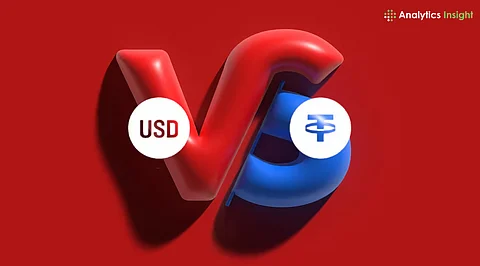

The U.S. and Singapore are taking diverging regulatory paths to stablecoins and tokenized deposits.
Banks promote tokenized deposits for trust and integration; stablecoins dominate in liquidity.
Major banks are working toward a unified digital ledger for coexistence and scale.
As the digital transformation of finance accelerates, stablecoins and tokenized deposits are two powerful instruments that are developing, slowly changing how money moves, while offering both promises of new programmable capabilities and transactions that are nearly instantaneously settled at low cost.
They are fundamentally different instruments in their design, trust models, and regulatory outlook. The real battle lies not just in which will dominate, but who will ultimately control the architecture of digital money in the future.
At the core, both stablecoins and tokenized deposits aim to replicate the benefits of traditional money on a blockchain. While they serve a similar stated purpose, they are essentially different instruments:
Stablecoins are issued by non-bank entities, such as Tether (USDT), Circle (USDC), and PayPal (PYUSD), and are backed by separate reserves, including short-term Treasuries. They are issued on open public blockchains, and access to them is available to everyone worldwide.
Tokenized deposits, on the other hand, are issued by licensed banks and represent customer deposits that are tokenized with a layer of blockchain technology. These tokens represent deposits, maintain deposit insurance, are subject to regulation, and interact with existing bank infrastructure.
Also Read: Wall Street’s Stablecoin Gambit: A Turning Point for Crypto and Traditional Finance
The divergence in regulation is becoming evident. In May 2025, the United States Senate moved forward with the GENIUS Act, acknowledging the systemic scale of dollar-based stablecoins, such as USDT and USDC. This legislation would require issuers to maintain segregated U.S. Treasuries and operate bankruptcy-remote structures that provide some consumer protection, but without full banking guarantees, such as deposit insurance.
Singapore is also advancing tokenized deposits. The Monetary Authority of Singapore (MAS) has impressively expanded its Project Guardian pilot program with DBS, HSBC, and Standard Chartered to include the ability to issue on-chain deposits for foreign exchange (FX) and repurchase agreement (repo) trades.
These developments point to a pivotal question: Who will control the digital “plumbing” of programmable money banks or blockchain-native firms?
Real-World Adoption Is Already Here
In the field, both instruments are gaining traction:
J.P. Morgan’s Kinexys (formerly JPM Coin) has surpassed $1.5 trillion in cumulative settlements, even piloting tokenized Treasury ETF transactions.
Citi’s Regulated Liability Network allows corporate treasurers to move liquidity across borders without using SWIFT.
Circle’s multi-chain payments network lets companies pay suppliers on Solana, collect revenue via Stellar, and consolidate funds under New York-based custodians.
These projects aren't theoretical, and they’re operational today. Stablecoins, meanwhile, are a staple in the crypto market and have made inroads into cross-border payments, remittances, and even trade finance.
While stablecoins excel in terms of reach and accessibility, banks are focusing on compliance and integration. Tokenized deposits are inherently safer, as regulated institutions back them and are eligible for government support in crisis scenarios. Stablecoins, by contrast, rely on market confidence and transparency of reserves.
Economically, the models differ sharply:
Stablecoin issuers earn revenue by capturing the spread between T-bill yields and the zero interest paid to holders. In 2024, Tether reportedly booked over $5 billion in profit.
Banks monetize deposit tokens by embedding them in programmable workflows, offering clients regulatory clarity and operational efficiency.
Treasurers are beginning to diversify: tokenized deposits for intra-bank liquidity; stablecoins for after-hours invoices in emerging markets like Argentina.
Despite progress, both camps face headwinds:
Tokenized deposits could fragment the market if every bank uses proprietary private chains, leading to a lack of interoperability.
Stablecoins still face risks, as seen in USDC’s brief de-pegging during the 2023 Silicon Valley Bank crisis. Additionally, regulators like the SEC may classify them as unregistered money market funds, adding to the uncertainty.
Capital requirements also matter. If Basel III weights tokenized liabilities too heavily, banks may scale back issuance. On the stablecoin side, a decline in Treasury yields could pose a threat to profitability.
The Bank for International Settlements is leading a multi-jurisdictional effort called Project Agorá, involving 41 institutions and 7 central banks. Its goal? Develop a unified ledger that allows tokenized deposits and Central Bank Digital Currencies (CBDCs) to coexist and interoperate. Pilots are expected by early 2026.
J.P. Morgan plans to open Kinexys to third-party banks this year, and Circle is lobbying to let U.S. banks treat USDC as a cash equivalent. The race is no longer just about innovation; it’s about scale, trust, and integration.
Stablecoins and tokenized deposits are not merely competing instruments; they represent competing visions of the digital future of money. One prioritizes openness and liquidity, the other emphasizes regulation and trust. As adoption accelerates and regulation matures, both models are likely to coexist, but the balance of power will depend on who controls the infrastructure of programmable finance.
Also Read: Stablecoins to Watch: 10 Picks for Smarter Crypto Control in 2025
